I have a regression model for some time series data investigating drug utilisation. The purpose is to fit a spline to a time series and work out 95% CI etc. The model goes as follows:
id <- ts(1:length(drug$Date))
a1 <- ts(drug$Rate)
a2 <- lag(a1-1)
tg <- ts.union(a1,id,a2)
mg <-lm (a1~a2+bs(id,df=df1),data=tg)
The summary output of mg is:
Call:
lm(formula = a1 ~ a2 + bs(id, df = df1), data = tg)
Residuals:
Min 1Q Median 3Q Max
-0.31617 -0.11711 -0.02897 0.12330 0.40442
Coefficients:
Estimate Std. Error t value Pr(>|t|)
(Intercept) 0.77443 0.09011 8.594 1.10e-11 ***
a2 0.13270 0.13593 0.976 0.33329
bs(id, df = df1)1 -0.16349 0.23431 -0.698 0.48832
bs(id, df = df1)2 0.63013 0.19362 3.254 0.00196 **
bs(id, df = df1)3 0.33859 0.14399 2.351 0.02238 *
---
Signif. codes: 0 '***' 0.001 '**' 0.01 '*' 0.05 '.' 0.1 ' ' 1
I am using the Pr(>|t|) value of a2 to test if the data under investigation are autocorrelated.
Is it possible to extract this value of Pr(>|t|) (in this model 0.33329) and store it in a scalar to perform a logical test?
Alternatively, can it be worked out using another method?
